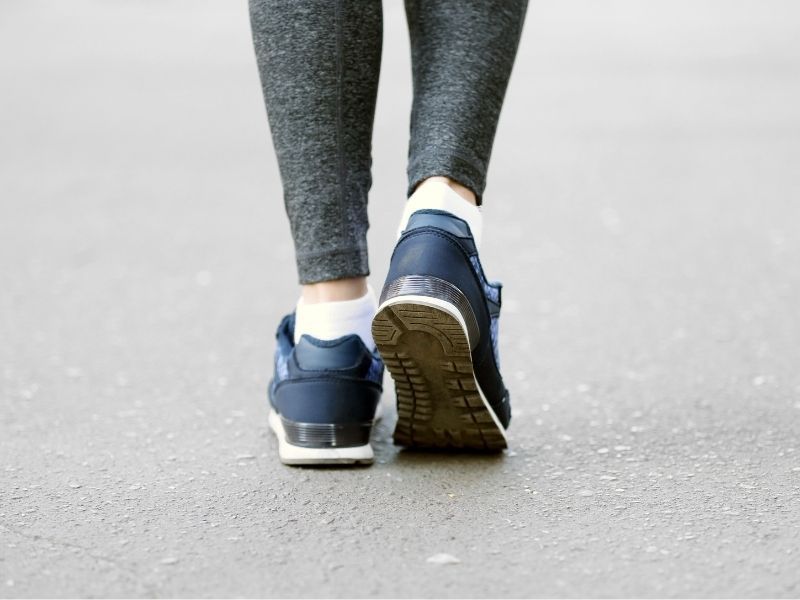Graded Exposure: The Key To Movement Success

Most health professionals recommend resting the area affected by an acute injury in order to recover. In many cases, due to the extent of the injury, this may absolutely be necessary. However, it appears that recently the tide is turning in terms of how soon movement is recommended in order to speed recovery from certain types of injury or even surgical procedures.
In fact, getting things moving again may reduce the risk of developing chronic pain.
Movement has different effects in the acute vs. chronic pain sufferer, but the process we are going to discuss in assigning it is focused on the chronic pain sufferer. This concept is called graded exposure.
Pain itself can be warning sign that protects us from re-injury, but sometimes people adopt an undesired pain-avoidance behavior that does more harm than good. The concept of graded exposure has been designed with these individuals in mind.
Fear of movement and re-injury
Pain and common disabilities associated with it are influenced by many different things, and some of them do not appear to respond to a structural-biomechanical approach. Psychological and psychosocial factors play an important part, and individuals with fearful thoughts related to movement often experience more pain and disability in the long run.
It’s also known that longstanding avoidance of movement and compensatory strategies (altered movement due to previous injury or fear of movement) may lead to a progressive impairment of movement skill.
Thus, we need to differentiate pain disability and the disability that results from something like a musculoskeletal problem. Sometimes, musculoskeletal problems are gone, injuries are healed, but the disability remains due to fear of movement and avoidance behavior.
It appears that often health professionals that work with individuals that suffer from chronic pain tend to forget is that perhaps the primary obstacle that is being experienced isn’t the tissue itself, but the fear of performing certain activities or movements because the individual believes they are re-injuring the painful area.
What is graded exposure?
Graded exposure is that concept that is based on progressively exposing individuals to increasing levels of stress in order to stimulate adaptation in the central nervous system.
It can significantly reduce sensitivity to movement and avoidance behaviors that contribute to chronic pain.
What needs to be considering in graded exposure is applying just the right amount of stress that will not cause any setbacks in progress, but instead stimulate adaptation.
This principle is easily applied to areas such as muscle building, for example. Every workout session, the stress increases just a bit more, either through more repetitions or added weight. Doing too much hampers progress, and may lead to injury.
We can easily apply this concept to virtually all therapeutic modalities, including exercise, stretching, massage therapy, neuromuscular techniques (such as muscle energy techniques), and much more.
Is there a difference between graded exposure and graded exercise?
There are many applications of graded exposure, and we should differentiate this to graded exercise. Graded exposure is a concept of progressively increasing stress to overcome the fear of movement and modulate the nervous system, but as mentioned, can be applied to many different types of therapeutic modalities.
Graded exercise is a common meth0d that is meant to teach an individual that they can do certain movements and reach certain ranges of motion via a progressive approach. This is especially helpful for individuals that suffer from chronic pain and are afraid to perform certain movements or activities.
As it is, graded exposure is part of graded exercise, and it’s certainly possible to apply the principles of both at the same time.
Graded exposure and adaptation of the nervous system
Several studies have identified a strong link between pain perception and mood. Anger and negative emotions lower the pain threshold, making us more sensitive to pain, and giving us extra reasons to feel irritable.
Thus, it is widely accepted that our psychological and social circumstances modulate our interpretation of pain, and our reactivity and levels of vigilance. Our perception of safety is also important, and this is what progressively changes during graded exposure.
Achieving a dosage of stress that triggers very low-intensity pain with a controlled movement is away to send a signal to your nervous system that this move or particular range of motion is safe to perform.
In time, it will feel more comfortable and less pain will occur with this movement because you will have adapted to this stressor. More stress can be applied to create further adaptation, and reduce the pain “alarm” further as your nervous system becomes de-sensitized to the stimulus.
This technique is generally based on mainly observational and anecdotal evidence, but there is also scientific literature that establishes the foundations and the role of graded exposure in cases of pain.
Still, there is no final guideline or definitive recommendation to guide the application of graded exercise in particular. This is where the art of the work and experience comes into play.
There are some principles that are helpful to follow:
- Assessing fear of movement: There are many potential ways to assess fear of movement. From graded tests to simple client interview and demonstration.
- Implementation of movements and stress loads: Sometimes there are multiple movements that are problematic, and/or activities that don’t produce discomfort until load is applied. These can be divided up and dealt with one at a time. Improvements in some movements may directly improve others without specifically addressing them!
- Re-evaluation and modifications: After a given time that depends on the individual’s situation (often times within the same visit), the problematic movements or tests can be repeated, and adjustments made to further improve the response.
The bottom line is that graded exposure and exercise can be an extremely valuable component of any chronic pain sufferer’s movement and/or massage therapy program.
The power lies in identifying activities, movements, ranges of motion, and other factors which trigger fear, or avoidance, and creating a plan to systematically reduce or eliminate that fear by starting with education, then selecting an appropriate low-threatening way to begin, and progressing over time as results are attained.
References:
Vlaeyen, J. W., Kole-Snijders, A. M., Rotteveel, A. M., Ruesink, R., & Heuts, P. H. (1995). The role of fear of movement/(re) injury in pain disability. Journal of occupational rehabilitation, 5(4), 235-252.
Tuna, Z., & Oskay, D. (2018). Fear of movement and its effects on hand function after tendon repair. Hand surgery and rehabilitation, 37(4), 247-251.
George, S. Z., & Zeppieri Jr, G. (2009). Physical therapy utilization of graded exposure for patients with low back pain. journal of orthopaedic & sports physical therapy, 39(7), 496-505.
Sam Visnic
I’ve spent my life studying the fundamental aspects of human health with a focus on movement and clinical massage therapy. In a world of specialists, surgical procedures, drugs and quick fix remedies, I’m committed to finding and developing strategies that help people stuck at the “gap”. Over the last 20 years I’ve studied dozens of systems and methodologies for uncovering the root cause of aches and pains, along with postural and movement issues. Pain science, the art and science of hands-on soft tissue massage techniques, myofascial release, and coaching movement is essential in my practice. Integrating different methods but above all deciphering WHEN to use different techniques with different people and situations, along with integration of movements that people want to be able to do again is the key to long term success with my incredible track record with clients. Understanding the various elements that contribute to conditions and the power of communication and education makes my Release Muscle Therapy program separate from other hands-on therapy approaches.
Blogs You May Be Interested In
Categories
-
Deep Gluteal Pain Syndrome
-
Deltoids
-
Fallbrook
-
Foam Rolling
-
Glutes
-
Hamstrings
-
Hypnosis For Pain
-
Lats
-
Levator Scapulae
-
Lifestyle
-
Massage Therapy
-
Mobility
-
Movement and Exercise
-
Murrieta
-
Muscles
-
Nutrition
-
Obliques
-
Pain
-
Pectorals
-
Piriformis
-
Plantar Fasciitis
-
Product Review
-
Psoas
-
Quadratus Lumborum
-
Quadriceps
-
Rhomboids
-
Serratus Anterior
-
SI Joint
-
Sternocleidomastoid
-
Stretching
-
Subscapularis
-
Temecula
-
TMJ
-
Trapezius
-
Uncategorized
















